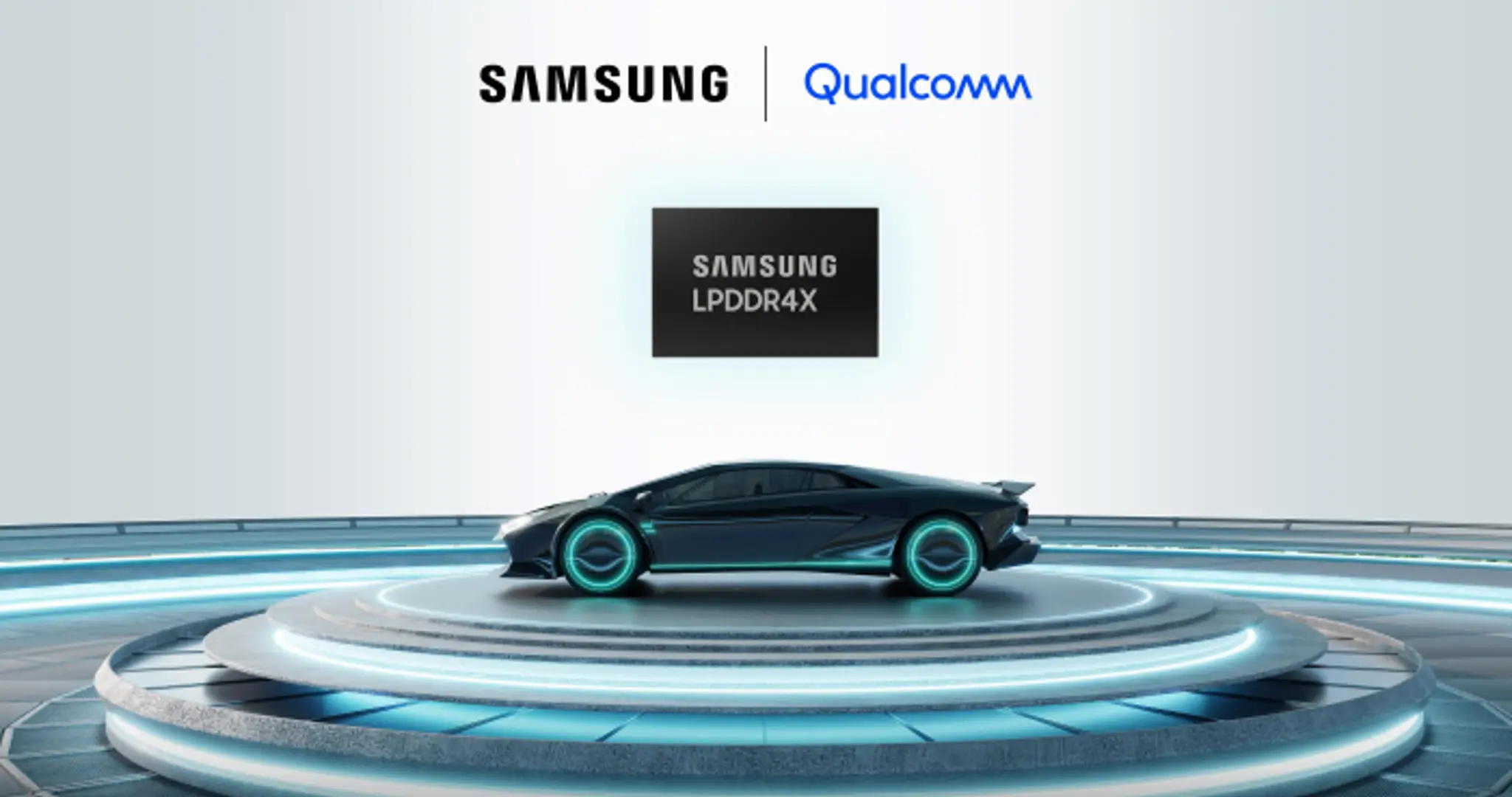
Samsung has announced that its automotive LPDDR4X memory has officially qualified for use with Qualcomm’s Snapdragon Digital Chassis. This development marks a significant milestone for Samsung’s automotive memory solutions and reinforces its commitment to delivering cutting-edge technology for automotive applications.
Partnership with Qualcomm
The partnership with Qualcomm Technologies is set to leverage Samsung’s LPDDR4X memory in premium In-Vehicle Infotainment (IVI) systems and Advanced Driver-Assistance Systems (ADAS). This collaboration underscores the strategic alignment between the two companies in advancing automotive technology.
Key Points of the Qualification
- Robust Supply Chain Stability: Samsung’s qualification ensures a stable supply chain for automotive memory, crucial for maintaining the continuity of technology and support for ecosystem partners using Snapdragon Digital Chassis.
- Enhanced Automotive Solutions: The qualification highlights Samsung’s commitment to supporting automotive applications with reliable and high-performance memory solutions, including both DRAM and NAND products.
- Qualcomm’s Role: Qualcomm’s Snapdragon Digital Chassis will integrate Samsung’s LPDDR4X memory, benefiting from its reliability and high performance in demanding automotive environments.
- Long-Term Collaboration: The collaboration with Qualcomm is poised to support rapid development cycles and exceptional product control, ensuring long-term customer solutions and advancements in automotive technology.
Looking Ahead
Samsung is also advancing its next-generation automotive memory with the development of LPDDR5 technology. Expected to be available in the fourth quarter of this year, LPDDR5 will offer speeds of up to 9.6Gbps, designed to operate efficiently even in extreme temperatures. This next-gen memory technology will further enhance the performance and reliability of automotive systems, aligning with Samsung’s vision for the future of automotive electronics.
